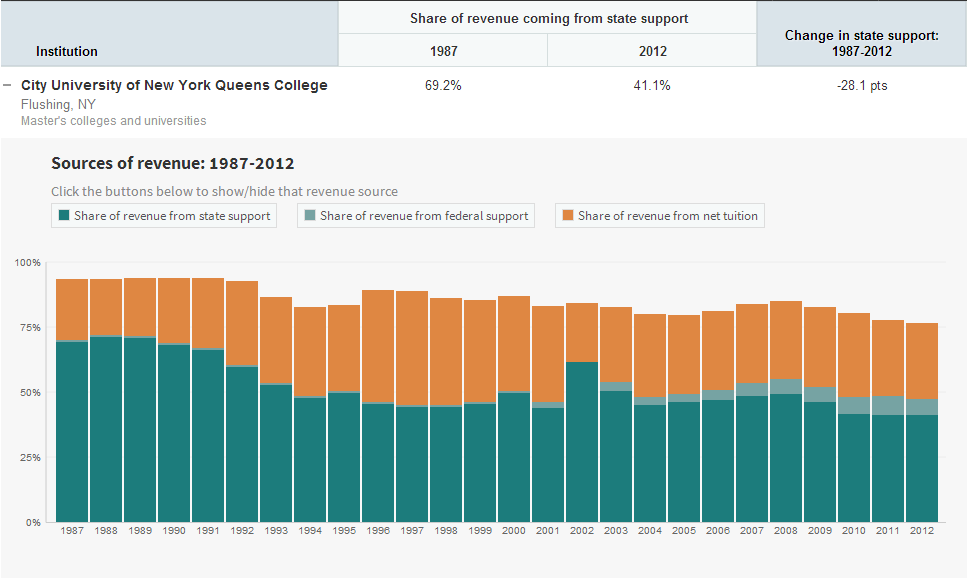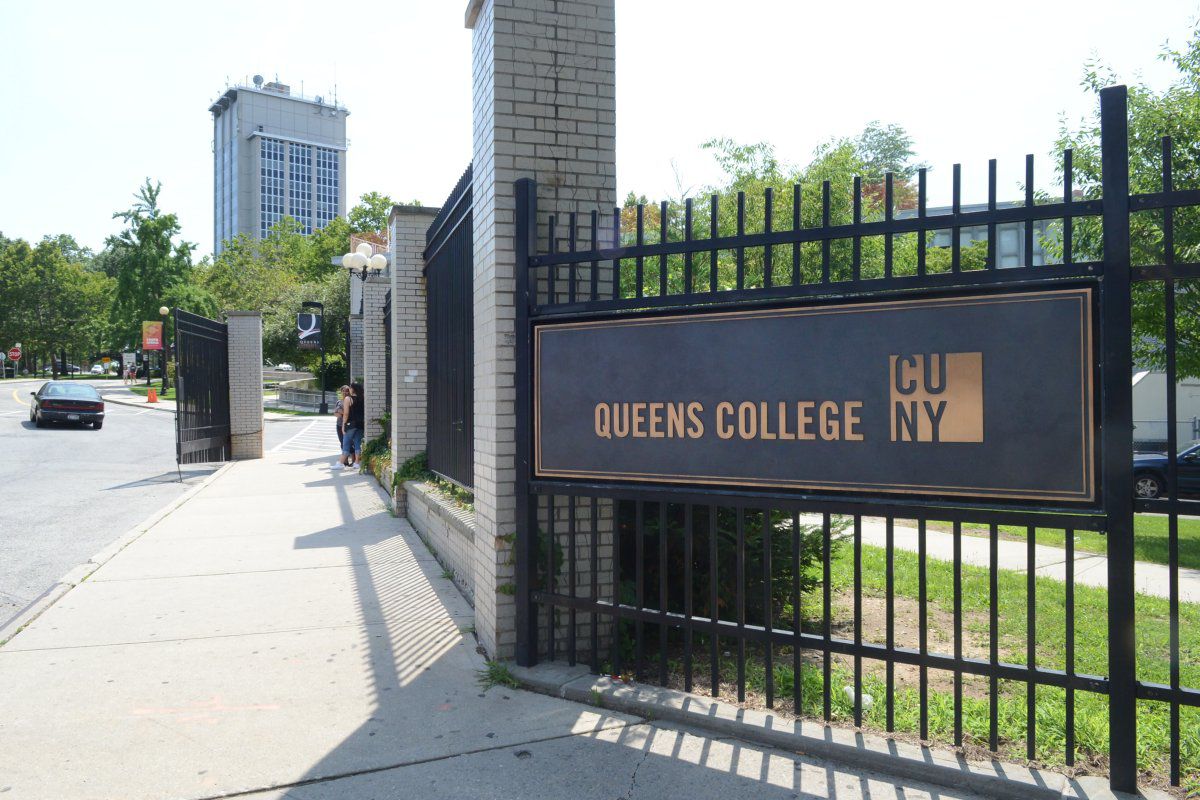Share of state funding of total revenue for Queens College has fallen 28.1 percent in the past 25 years. The state is paying less and QC students are paying more, according to The Chronicle of Higher Education.
CUNY tuition has been increasing $300 per year until the 2015-2016 academic year to make up for lost state funding. This is according to a resolution by the CUNY board of trustees as of July 21, 2011. Increase in federal funding has filled the gap, which has supported $9 to $15 million for QC since 2007, The Chronicle reported.
“54 percent of CUNY students have annual family incomes of $30,000 or less. An additional tuition increase will threaten access to a college education and undermine CUNY’s mission to provide opportunity for the low-income and working class students of New York City,” Barbara Bowen president of the Professional Staff Congress of CUNY, said on the PSC website.
The PSC is a union featuring more than 25,000 faculty and staff across CUNY.
In the last 25 years, the share of revenue funding nationally has slowly balanced out between the students and the state. On average in the U.S., states paid $5,906 and students paid $5,189. In New York, the state paid $8,105 and students paid $4,632, according to the State Higher Education Executive Officers.
Although New York students are paying just $571 less than the national average, the state is paying $2,199 more than the national average.
In QC, out of 11,207 undergraduate financial aid applicants in 2012, 8,648 received financial aid they needed, and 7,000 had their entire tuition paid, according to COLLEGEdata.
Regardless of financial aid, lack of funding has forced educational institutions like CUNY to raise their tuition, seek federal aid and has made students take out loans or pay out of pocket.
In 2012, 47 percent of QC undergraduates took out loans with an average of $20,624 in debt after they graduated, according to COLLEGEdata.
The need to work to pay for school is a priority for a large portion of the student body. According to the financial aid department webpage, 63 percent of QC students receive need-based financial aid. It leaves 37 percent of students with either partial or no financial aid at all.
“I had to take out loans to pay my tuition after the increases started in 2011. Although I already started paying them off, I work full-time and go to school full-time to do that, not everyone is lucky or dedicated enough to do that,” Giselle Rodriguez, 21, senior, said.
Student debt has hit an all time high of $870 billion in 2011, with $580 billion held by people under 40 years old, according to the New York Federal Reserve.
Although student debt has been rising steadily, this does not stop CUNY from trying to get more state funding. In a recent email, Jay Hershenson, secretary of the board of trustees, urged students and faculty to be aware that the state is finalizing their budget, with increases from everything to projects on CUNY campuses to funding of the DREAM Act.
“In respect to state budget, CUNY is working with the legislature and office of [the] governor to help bring recognition to the importance of adequate funding for CUNY during the state budget process. The conference committee of higher education has a target of $64 million to be appropriated and it will be determined how much CUNY receives. We need to continue to communicate, advocate and push for improvement,” Hershenson said.














